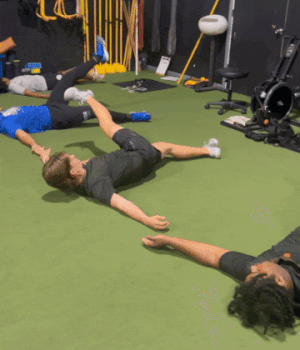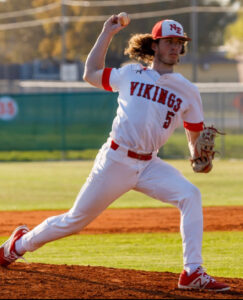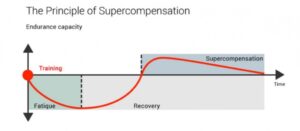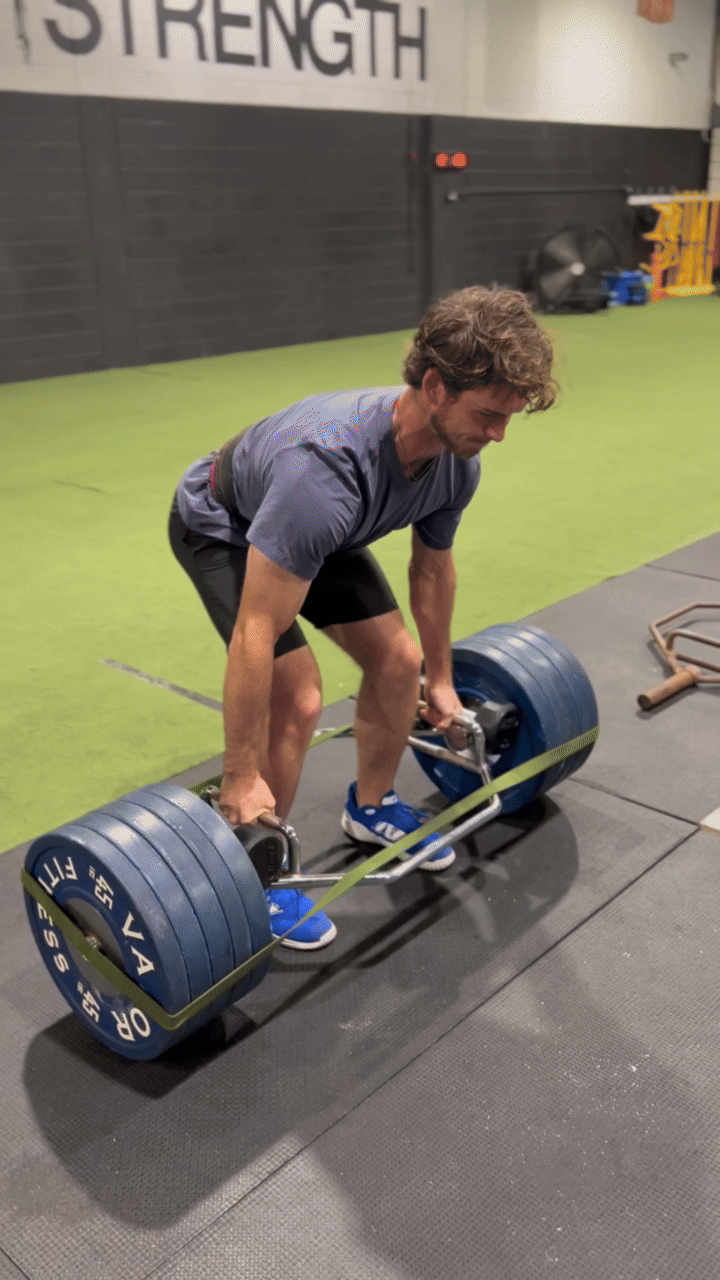In-Season Training
Athletes should absolutely be doing in-season training. At OTA, every year we communicate to our athletes that they need to continue training even when the season starts. Every year it’s normal that once the season begins, athletes pause or cancel training until after the season is over. We very much disagree and want to see this trend reversed.
 It’s a shame to see athletes have awesome consistency and results in their offseason only to stop and allow those results to drop off until after their season is over. This doesn’t help their progress and development as an athlete. Some of the fears for the athletes are overtraining, risk of injury, or becoming too fatigued to perform. Those are valid concerns of course, but not if their in-season training is programmed and managed properly by the coach.
It’s a shame to see athletes have awesome consistency and results in their offseason only to stop and allow those results to drop off until after their season is over. This doesn’t help their progress and development as an athlete. Some of the fears for the athletes are overtraining, risk of injury, or becoming too fatigued to perform. Those are valid concerns of course, but not if their in-season training is programmed and managed properly by the coach.
Many people think that by playing their sport, they are still improving physically. That’s simply not the case. Theres a misconception that once the season starts, the sport is keeping the athletes in shape, and they shouldn’t do any other training. This is false and hurts an athlete’s performance. It not only will hurt their performance as the season wears on but also hurt their development long term.
Sport is a stressor, and as a season wears on the athlete is accumulating more and more stress and fatigue. As that happens, they lose their strength, speed, and power. In-season training is about not only managing stress and working on recovery, but doing the minimal effective amount of training needed to make sure they don’t get weaker and less explosive. Athlete’s just need to change their mindset about how to train in-season.
Look at legends like Kobe Bryant who would hit the gym in between Finals games or James Harrison who was notorious for hitting heavy lifts before AND after games. The athletes who make it the furthest in their careers are the ones who never stop training and working on their physical performance. No matter what the season is.
Take It from My Athletes
Over my years with OTA, I’ve now been able to work with guys from high school freshman level all the way to them now playing in college. I can say without a shadow of doubt that the athletes who still trained in-season and didn’t take breaks year in and year out are the exact ones who developed into college athletes. Many of their peers who did the opposite and trained off and on are now no longer even playing.

While my guys who trained year-round continued to see huge improvements year after year, the seasonal athletes basically plateaued. Each year taking 2 steps forward and 1 step back year after year.
Several of my baseball athletes who are now in college STILL do in-season training with me online. A couple of them are already seeing playing time as freshman/sophomores and are already some of the best and most well-rounded athletes on their team. That’s not me boasting. That came directly from their coaches.
If an athlete is really serious about reaching the next level in their athletic journey, then training CANNOT be seasonal. It has to be year-round. They just need to find a coach and program that they can stick to and can manage their seasonal training.
3 Tips on In-Season Training
High Intensity and Low Volume
One misconception on training in season is that athletes cannot lift heavy. Not only can they but they should! The only difference is we’re not doing any max outs and we’re keeping the total volume low. Remember the goal is to make sure their overall max strength and power is maintained. So, when we think of strength training in season, we want the athletes to get the minimal effective dose. Just enough intensity to maintain but not enough to leave the athlete in a state of too much fatigue.
When my athletes lift in season, we think of keeping things around 80-90% and no higher. Remember the goal is just to make sure their strength doesn’t fall off as the season goes on. So they shouldn’t be lifting to failure at any time. If strength declines, athletes overall performance declines. So here we may do 2-3 total sets for max strength where in the off season we’re doing 4-6 total sets.
When it comes to their power, we’ll do just 1 or 2 variations of plyos just to make sure their doing some explosive work. Most of their speed and agility training is what they’re doing in practice throughout the week, so there’s no reason to double up on that in their performance sessions. Again, the focus is getting the minimal amount with just high enough of intensity to keep their physical performance up.
The other thing with strength and plyometrics in season is coaches need to KEEP IT SIMPLE. No unecessarily complicated movements. Don’t be overly complex. Keep the athletes strong and explosive with the simplest movements you can.
Maintain Baseline and Overall Performance
A basic training principle and law of athletic training adaptation is called supercompensation, which was originally coined by Russian scientist Nikolai N. Yakovlev. Essentially it explains how training and athletic adaptation works over time. When an athlete starts training, they’re starting at their baseline. As they train, fatigue, recover, and adapt to the training, they super compensate and basically their baseline performance level increases. As they continue training over time, that baseline continues to increase. That’s how we see true results and performance improvements over the long term.

When the athlete stops training though, that baseline begins to drop. The performance level begins to decrease because they’re no longer stimulating their body to adapt. The goal of in-season training is to keep the baseline that was increased over the offseason maintained and prevent their performance level from dropping. This sets them up to have a higher baseline when they start that next season.
Athletes who don’t train in-season will noticeably see huge drops in performance. As the season goes on and fatigue sets in, that performance baseline drops more and more. When the next off season starts, they basically have a harder hill to climb to get their body back into training shape and really take another step forward in their athletic performance that off season.
Simple example: two athletes start an offseason with 30-inch verticals. After a full off season, they have a 36–37-inch vertical going into the season. One does in season training, and one does not. The one that does by the end of the season may see a drop in his vertical, but he’s still jumping 32-33 inches. The one that does no training at all and just plays the season will come back that next off season with a vertical of 27-28 inches. Huge drop and I’ve seen it happen. The athlete who did in-season training and kept his performance maintained as much as possible has a significant advantage to get even more improvements that next off season. The one who didn’t has to recover and recondition his body to try to catch up just to get back to where he was the prior off season.
Mobility, Recovery, and Correctives
Like I stated above, training in-season is NOT the time to have the athlete perform overly complex or high intensity movements. Every new movement you introduce to your athlete is a stressor, and the goal in-season is to minimize and manage stress while maintaining their performance. So the athletes should be doing simple but effect strength exercises.
 Aside from that, this is the time to focus more on the athletes mobility and working on correctives. Simple drills to maintain joint mobility and movement to help them recover and stay healthy. Every athlete may have different things going on, so this can be a bit more individualized. My baseball pitchers will have a lot more arm care in their programming while my football athletes will be doing a lot more lower body correctives. Each sport has different needs based on the movement pattern overload.
Aside from that, this is the time to focus more on the athletes mobility and working on correctives. Simple drills to maintain joint mobility and movement to help them recover and stay healthy. Every athlete may have different things going on, so this can be a bit more individualized. My baseball pitchers will have a lot more arm care in their programming while my football athletes will be doing a lot more lower body correctives. Each sport has different needs based on the movement pattern overload.
Conclusion
So to sum it up, athletes should be doing in-season training and treating it just as seriously as they do the off season. It’s just as important and shouldn’t be avoided or neglected. As a coach, just have to be sure you are very heavily monitoring your athletes and making sure to manage their overall weekly training loads. Again, the goal is to maintain their performance but also manage and reduce as much overall stress and fatigue as possible.
If you have any questions on in season training, please reach out to me at jordon@overtimeathletes.com.
If you’re interested in elite athlete training online and working with me one on one, apply for OTA Elite!
Baseball season is starting now, so grab our Baseball Performance program below and make sure to get the In-Season training program with it!

